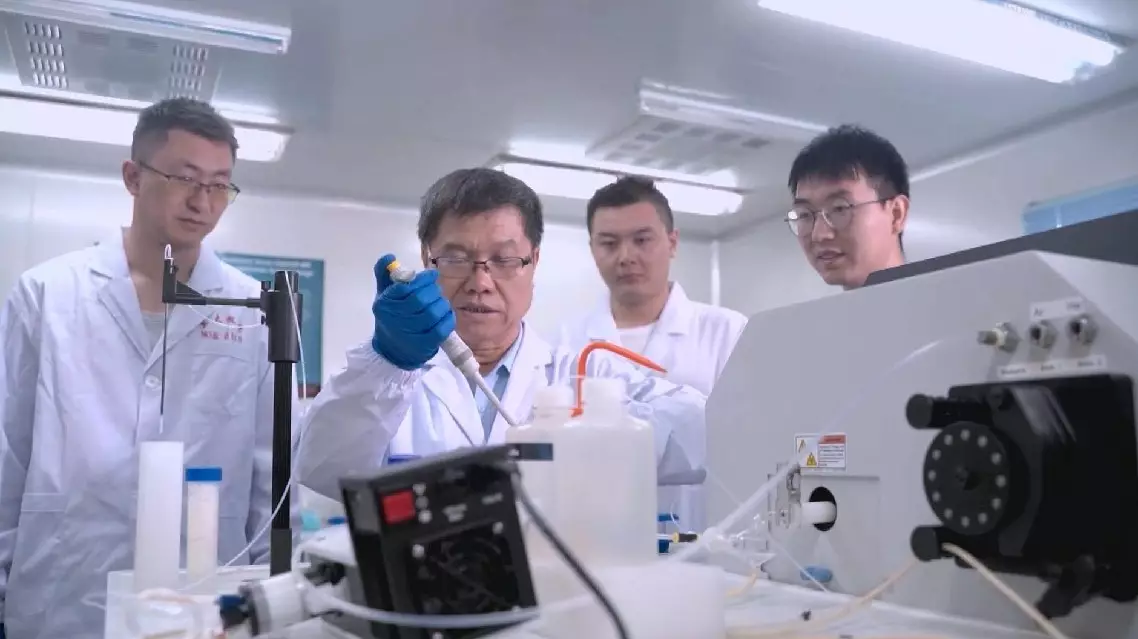China has promoted its capacity for basic scientific and technological research, while facilitating the transformation of research achievements over the past decade to accelerate structural sci-tech reform. The efforts have led to numerous breakthroughs and major advancements, positioning China as a global leader in technological innovation.
Since the new era, China has resolved a series of bottlenecks in core technologies and scored many major sci-tech innovation achievements by mobilizing national resources to achieve breakthroughs in key fields under the socialist market economy.
Historically, every round of sci-tech reform and industrial transformation started with major breakthroughs in basic research. For a long time in the past, China had few major original innovation achievements due to relatively weak basic research capacity and insufficient investment.
Since the new era, China has been making efforts to optimize the environment for original innovation and strengthen talent cultivation for basic research.
From 2012 to 2023, China's investment in basic research increased from 49.9 billion yuan (about 6.99 billion U.S. dollars) to 221.2 billion yuan. Its proportion in the national research and development investment has exceeded six percent for five consecutive years.
"From my perspective of view, China's basic research is transitioning from a period of accumulation to one of quality improvement. We have already produced a large number of original achievements, and I think, if we maintain the current momentum, China will definitely produce a number of major achievements that can open up new disciplinary directions, be included in textbooks, or lead the world's sci-tech development," said Pan Jiaofeng, head of the Institute of Science and Development of the Chinese Academy of Science (CAS).
The hard-won sci-tech achievements should not be laid aside and neglected. Chinese President Xi Jinping attaches great importance to the transformation and application of sci-tech achievements, stressing that the results of sci-tech innovation should be applied to specific industries and industrial chains.
Resolving bottlenecks in achievement transformation is a key point in structural sci-tech reform.
After years of efforts, Kuang Yun, deputy director of the Ocean Hydrogen Energy Research and Development Center of the Research Institute of Tsinghua University in Shenzhen, and his team successfully broke through the key technology of hydrogen production from seawater, filling a gap in the world. But the application of this technology poses new challenges to them.
"The technology needs repeated verification, and we were unsure if it could be applied. At that time, we felt like that there was no opportunity for a competent person to show his talents," said Kuang.
Ultimately, the Research Institute of Tsinghua University in Shenzhen facilitated a three-way collaboration among an enterprise, the research team, and the institute, leading to the successful operation of the world’s first and largest single-unit seawater hydrogen production device after more than two years.
"China is currently at the forefront in the world in the technology of hydrogen production from seawater. If the technology is advanced, we will be able to seize the initiative," said Kuang.
In 2016, the Outline of the National Innovation-Driven Development Strategy proposed to develop new market-oriented research and development institutes, and officially included such institutes into China's innovation system.
Compared with traditional ones that mainly focus on research and development, the new-type ones can better match research and development with market demands, serving as bridges to promote sci-tech achievement transformation.
Since the 18th CPC National Congress in 2012, China has forged various chains and platforms to support sci-tech achievement transformation.
By revising relevant laws and regulations, the rights to use, dispose and benefit from the transformation have been granted to enterprises and institutions, as well as researchers.
From 2012 to 2023, the value of technology contracts nationwide increased from 600 billion yuan to 6.15 trillion yuan.
"Over the past few years, we have promoted the deep integration of industry, universities and research institutes, so that it can truly play a role in the entire chain from research and development, to application, then to achievement transformation. The unified national technology trading market has flourished over the years," said Liu Dongmei, a researcher of the Chinese Academy of Science and Technology for Development.
From 2012 to 2023, China's total research and development investment increased from 1.03 trillion yuan to 3.3 trillion yuan. Its ranking in the Global Innovation Index rose from 34 to 12, entering the ranks of innovative countries.

China accelerates sci-tech reform with improved chains for achievement transformation




















































